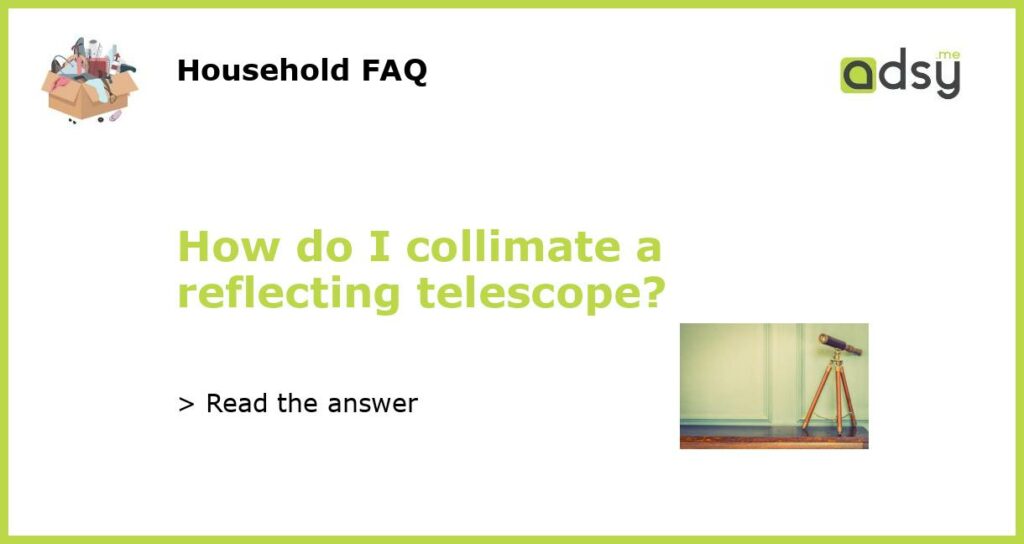Understanding Collimation
Collimation is an essential process for maintaining the optimal performance of a reflecting telescope. It involves aligning the optical elements of the telescope to ensure that the light rays coming from a distant object are properly aligned and focused on the eyepiece.
Step-by-Step Guide to Collimating a Reflecting Telescope
1. Check your telescope’s user manual: Before starting the collimation process, refer to the user manual specific to your telescope model. It will provide you with specific instructions and diagrams for your telescope’s collimation process.
2. Make sure you have the necessary tools: To collimate a reflecting telescope, you will need a few essential tools such as a collimation cap, a Cheshire eyepiece, a laser collimator, and possibly an additional tool known as a centering adjuster.
3. Start with the primary mirror collimation: Begin by collimating the primary mirror. This can be done using a collimation cap or a Cheshire eyepiece. Insert the collimation tool into the telescope’s focuser and carefully adjust the primary mirror’s alignment until the reflected light is centered in the tool’s viewing window.
4. Align the secondary mirror: Once the primary mirror is properly collimated, you can move on to aligning the secondary mirror. This is done by adjusting the tilt and rotation of the secondary mirror until it is centered and perpendicular to the optical axis of the telescope. A laser collimator is a useful tool for this step, as it provides a more accurate alignment.
5. Verify and fine-tune: After completing the primary and secondary mirror collimation, it is important to verify the alignment by checking the focus and clarity of the viewed objects through the eyepiece. If necessary, make any final adjustments in small increments to achieve optimal collimation.
Tips for Successful Collimation
1. Take your time: Collimation is a precise process that requires patience and attention to detail. Rushing through it may lead to improper alignment and subpar telescope performance.
2. Reference external resources: Online tutorials and videos can be valuable resources when learning to collimate a reflecting telescope. Websites such as Sky & Telescope and Cloudy Nights provide step-by-step instructions and tips from experienced astronomers.
3. Practice makes perfect: Collimation may seem challenging at first, but with practice, it becomes easier and more efficient. Don’t get discouraged if it takes a few attempts to achieve optimal alignment.
4. Regularly check collimation: Even after collimating your telescope, it is beneficial to periodically check and adjust the collimation. Factors such as transportation, temperature changes, and normal wear and tear can affect the alignment over time.
5. Seek professional assistance if necessary: If you have difficulty achieving proper collimation or are unsure about the process, it may be helpful to consult with an experienced astronomer or bring your telescope to a professional for collimation.






